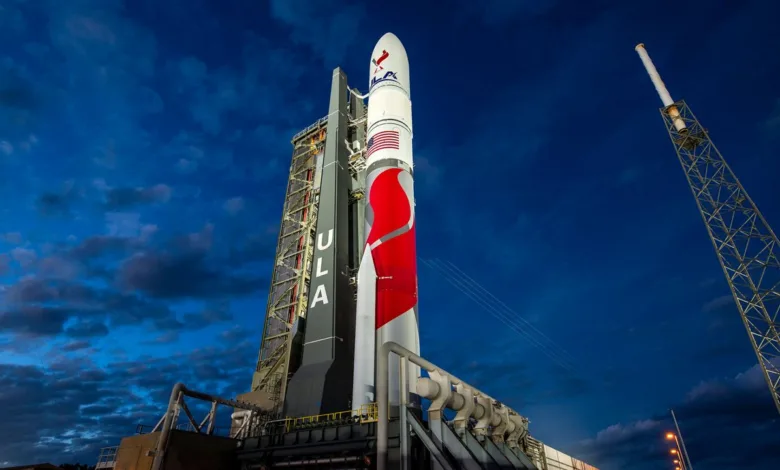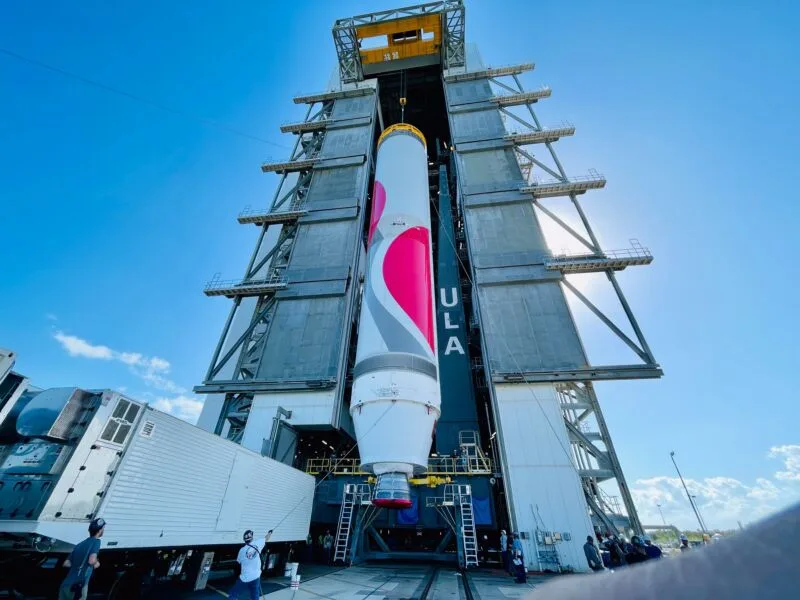

Controversy and Courage: ULA, U.S. Returns to the Moon with Vulcans, Rovers, and Celestial DNA
The United Launch Alliance’s (ULA) Vulcan Centaur rocket is scheduled to lift off on Monday at 2:18 a.m. EST. This is the United State’s first effort to land on the Moon in more than 50 years. Which is being spearheaded by the private sector.
The new Vulcan Centaur, which will replace the Atlas V rockets of ULA and Delta IV, will take Astrobotic’s Peregrine Lunar Lander on its initial flight. Favorable weather conditions, aiming for a controlled touchdown on the Moon’s mid-latitude region known as Sinus Viscositatis, or Bay of Stickiness, on Feb 23.
, The CEO of Astrobotics, John Thornton, described the mission’s importance as follows: “To lead America back to the surface of the Moon for the first time since Apollo. The business is a key component of the Commercial Lunar Payload Services (CLPS) program, an American strategic effort to leverage the private sector for better affordable lunar exploration.”
In order to complete the lunar landing mission, NASA has committed over $100 million to Astrobotic. Intuitive Machines, another contracted business, is scheduled to launch in February and settle close to the Moon’s south pole.. The push towards commercial involvement is a key element in stimulating a broader lunar economy, as outlined by NASA’s Joel Kearns, deputy associate administrator for exploration.
The successful execution of private lunar landings is crucial for preparing for NASA‘s Artemis program, which aims to return astronauts to the Moon later this decade as a stepping stone for future missions to Mars. Controlled lunar touchdown remains a challenging task, with roughly half of all attempts ending in failure due to the absence of an atmosphere, making navigation through treacherous terrain using thrusters the primary mode of descent.


Peregrine carries a suite of scientific instruments to explore radiation and surface composition, contributing to paving the way for future astronaut missions. Additionally, it holds a shoebox-sized rover from Carnegie Mellon University, a physical Bitcoin, and controversially, cremated remains and DNA, including those of Gene Roddenberry and Arthur C. Clarke.
The Navajo Nation, the largest Indigenous tribe in America, has raised concerns about the inclusion of human remains on the Moon, considering it as a desecration of sacred space. Despite objections and a last-ditch meeting with White House and NASA officials, the cargo remains part of the mission.
The Vulcan rocket’s upper stage, carrying late cast members of Star Trek and hair samples from past U.S. presidents, is expected to circle the Sun after deploying the lander, contributing to the mission’s scientific objectives and commemorating historical figures.





